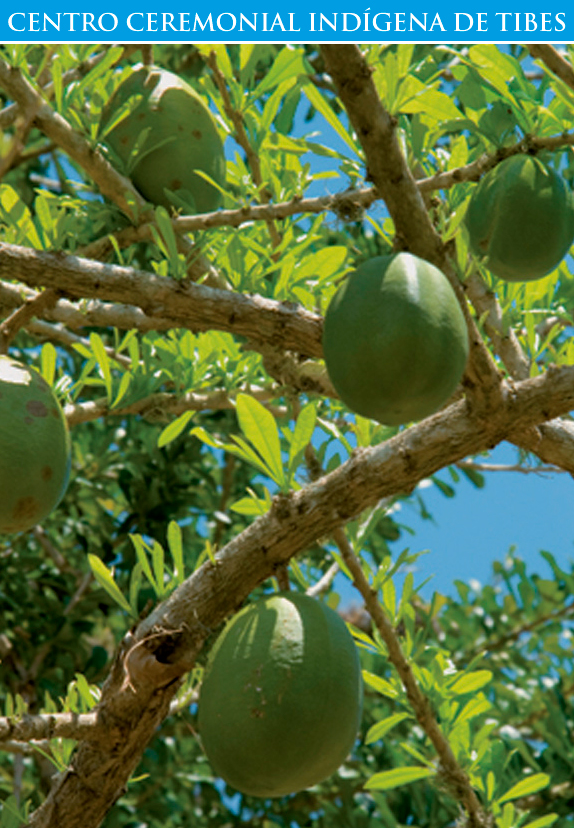
Centro Ceremonial Indigena de Tibes
This archaeological site in the hills on the northern outskirts of Ponce is the most important pre-Columbian site in Puerto Rico. Remarkably, it was only unearthed in 1975, when devastating floods exposed extensive Taíno ruins that notably include bateyes (ball courts), burial grounds, and granite boulders etched with petroglyphs. The ruins date back about 2,000 years and form the only known site also occupied by the Igneris – a pre-Taíno tribe about which little is known, except that they were overrun by the Taíno in around AD 1000. The site is still being excavated. Carretera 503 Km 2.8 • 787 840 2255 • Open 9am–3:30pm Tue–Sun • Adm $3 for adults; $2 for children (5–12 years); $1.50 for seniors • Visits are by guided tours only; reservations are recommended. The last tour is at 2pm
Carretera 503 Km 2.8 • 787 840 2255 • Open 9am–3:30pm Tue–Sun • Adm $3 for adults; $2 for children (5–12 years); $1.50 for seniors • Visits are by guided tours only; reservations are recommended. The last tour is at 2pm
1. Cemi
These sacred effigies of Taíno gods, in the form of wooden and stone statuettes, were believed to be empowered. Cemi were created and worshipped by the Taíno to bless the land with good harvests, and its people with fertility and health.
2. Petroglyphs
The Taíno etched large rocks here with depictions of spiritual figures, including one of a bat – the Taíno messenger of death. Many of the rocks are believed to have been transported from far away.
3. Bateyes
These plazas of paved stone were used for ball games and ceremonial dances. Tibes has 12 bateyes – each is about the size of a basketball court and is ringed by large boulders.
4. Museum
The small on-site museum’s exhibits include axe-heads, pottery, cemi, and even a skeleton, all of which were excavated here. A 30-minute video helps put the displays in perspective.
5. Guided Tour
A 90-minute guided tour takes you through subtropical forest, a replica village, and the bateyes, as the guide explains aspects of indigenous life. Re-enactments in costumes are also occasionally staged.
6. Ceramics
Hundreds of interesting Igneri and Taíno ceramics have been unearthed here, including pots, cemi, and headless figures with their hands tied behind their backs, suggesting execution.
7. Replica Village
A reconstruction of a yucayeque (Taíno village) features a rectangular caney (the village chief’s house) and circular, thatched bohíos (huts that were used by the villagers). These help visitors understand the Taíno way of life.
8. Botanical Garden
Tibes features a garden of plants and trees that were used by the Taíno. These include yucca, tobacco, and corn, as well as the local guanábana, higüero, and calabash, a large gourd.
9. Star-Shaped Plaza
One of the bateyes is, as its name implies, shaped like a star. It is thought to have been used as an astronomical compass, with stones laid in the form of triangles corresponding to cardinal points in the universe.
10. Cemetery
The main batey was built atop a cemetery, where 186 skeletons from both the Igneri and Taíno cultures were found. Most were curled into a fetal position, in the belief that they would be reborn.
Ball Games
The Taíno played violent ritual ball games in which competing teams could use any part of their body, except their hands. The balls were solid and players wore protective pads. The games were played for sport as well as for diversion, religious purposes, and even to make judicial decisions, including whether prisoners of war should be freed or killed.
 Tip: Be sure to make a reservation before you visit the park, as tours often sell out and you cannot explore the site unaccompanied.
Tip: Be sure to make a reservation before you visit the park, as tours often sell out and you cannot explore the site unaccompanied. Tip: A small café here serves snacks. There are also picnic benches by the river, so consider bringing your own lunch to enjoy under the shade trees.
Tip: A small café here serves snacks. There are also picnic benches by the river, so consider bringing your own lunch to enjoy under the shade trees.


